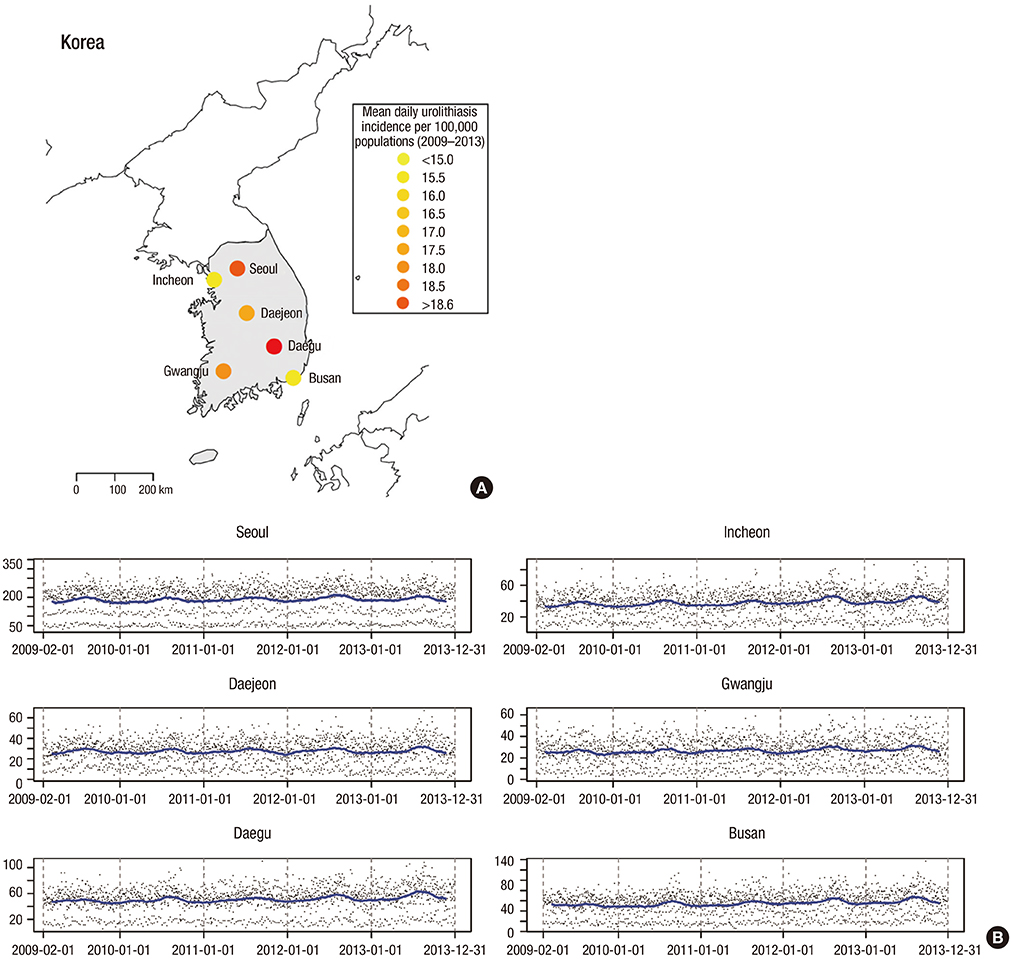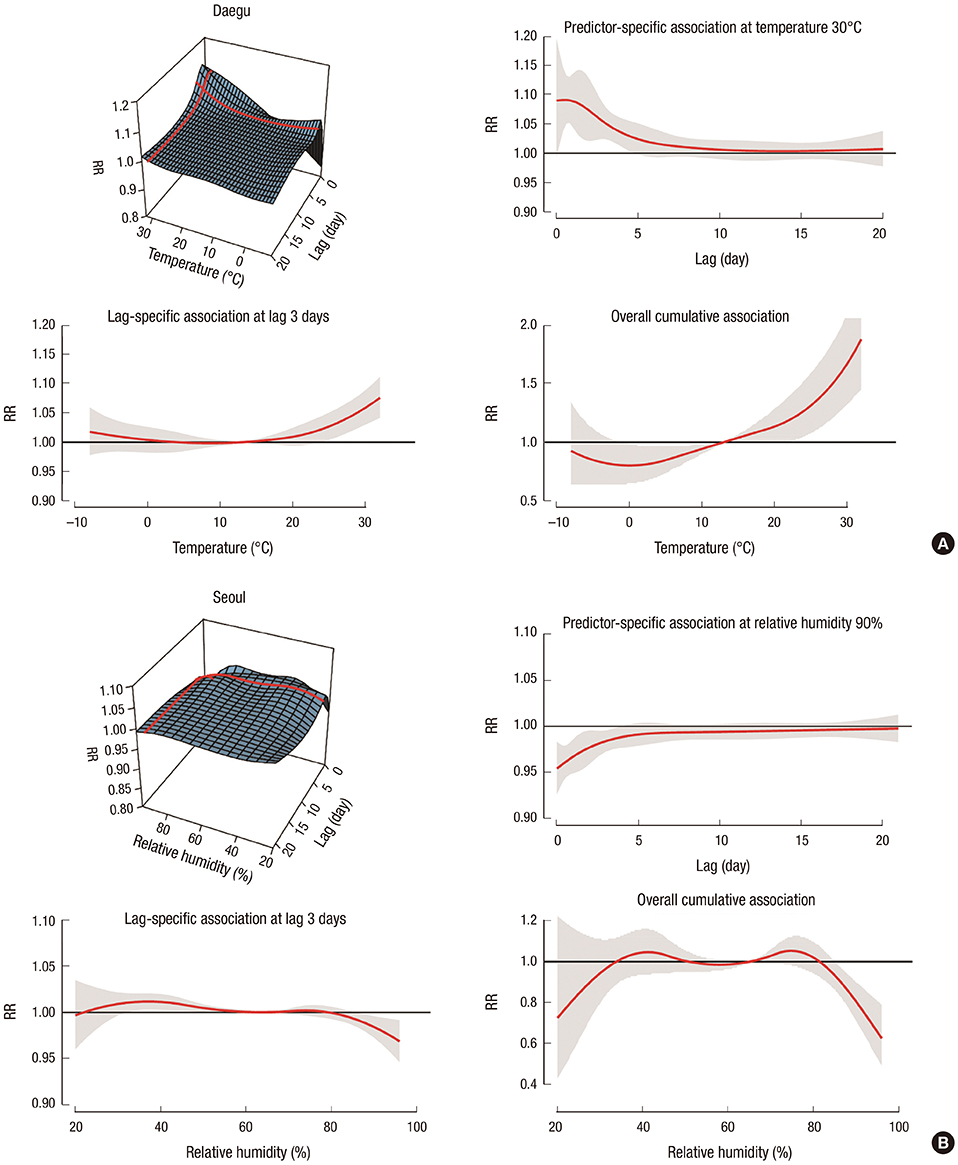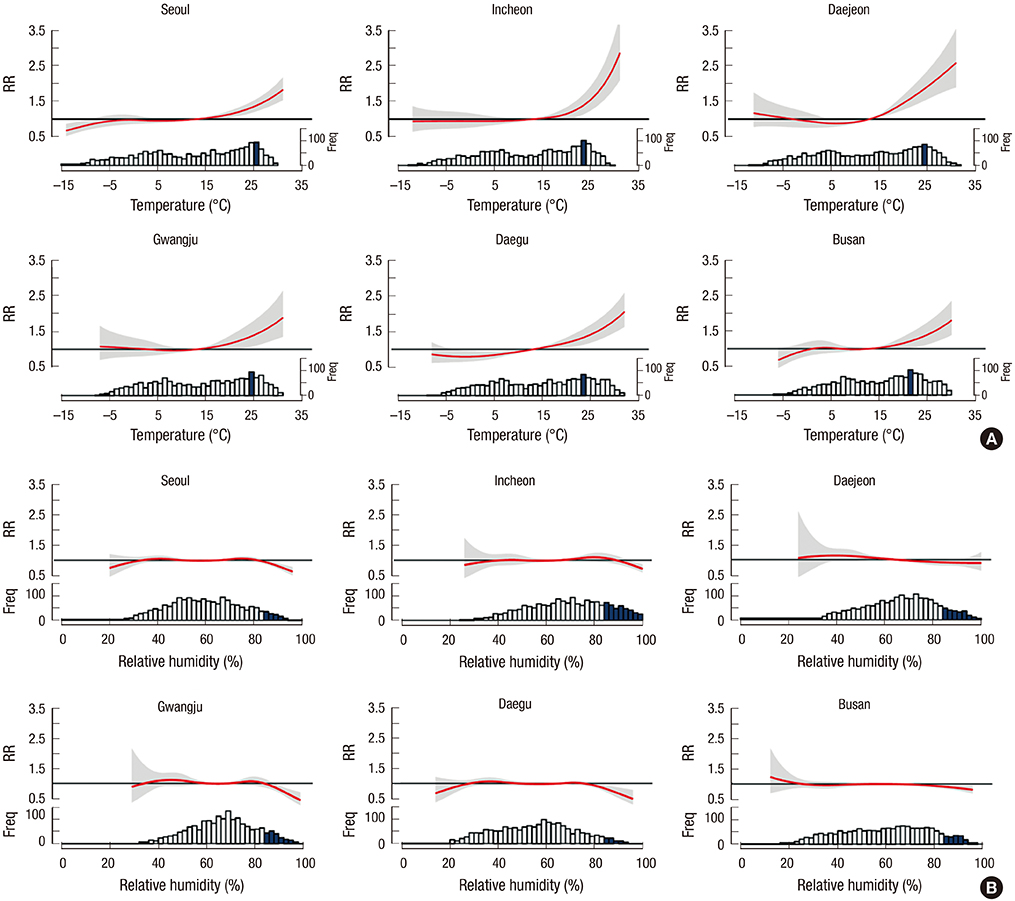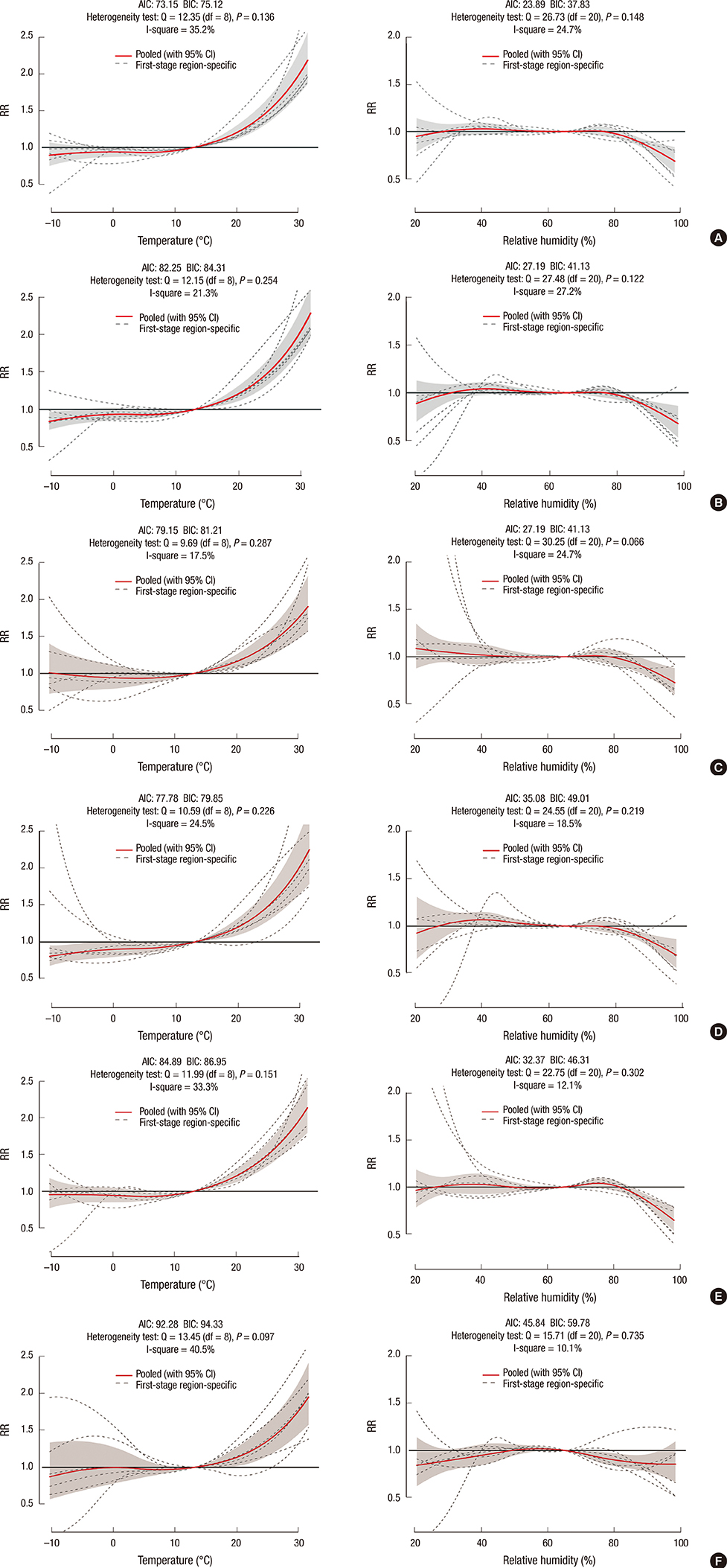J Korean Med Sci.
2017 Jun;32(6):999-1008. 10.3346/jkms.2017.32.6.999.
Daily Mean Temperature and Urolithiasis Presentation in Six Cities in Korea: Time-Series Analysis
- Affiliations
-
- 1Department of Urology, Chung-Ang University College of Medicine, Seoul, Korea.
- 2Department of Pharmacology, Chung-Ang University College of Pharmacology, Seoul, Korea.
- 3Department of Urology, Myongji Hospital, Seonam University College of Medicine, Goyang, Korea. photomol@hanmail.net
- KMID: 2377731
- DOI: http://doi.org/10.3346/jkms.2017.32.6.999
Abstract
- Seasonal variation in urinary stone presentation is well described in the literature. However, previous studies have some limitations. To explore overall cumulative exposure-response and the heterogeneity in the relationships between daily meteorological factors and urolithiasis incidence in 6 major Korean cities, we analyzed data on 687,833 urolithiasis patients from 2009 to 2013 for 6 large cities in Korea: Seoul, Incheon, Daejeon, Gwangju, Daegu, and Busan. Using a time-series design and distributing lag nonlinear methods, we estimated the relative risk (RR) of mean daily urolithiasis incidence (MDUI) associated with mean daily meteorological factors, including the cumulative RR for a 20-day period. The estimated location-specific associations were then pooled using multivariate meta-regression models. A positive association was confirmed between MDUI and mean daily temperature (MDT), and a negative association was shown between MDUI and mean daily relative humidity (MDRH) in all cities. The lag effect was within 5 days. The multivariate Cochran Q test for heterogeneity at MDT was 12.35 (P = 0.136), and the related I2 statistic accounted for 35.2% of the variability. Additionally, the Cochran Q test for heterogeneity and I2 statistic at MDHR were 26.73 (P value = 0.148) and 24.7% of variability in the total group. Association was confirmed between daily temperature, relative humidity and urolithiasis incidence, and the differences in urolithiasis incidence might have been partially attributable to the different frequencies and the ranges in temperature and humidity between cities in Korea.
Keyword
MeSH Terms
Figure
Cited by 1 articles
-
Low-Dose Unenhanced Computed Tomography with Iterative Reconstruction for Diagnosis of Ureter Stones
Byung Hoon Chi, In Ho Chang, Dong Hoon Lee, Sung Bin Park, Kyung Do Kim, Young Tae Moon, Taekyu Hur
Yonsei Med J. 2018;59(3):389-396. doi: 10.3349/ymj.2018.59.3.389.
Reference
-
1. Chen YK, Lin HC, Chen CS, Yeh SD. Seasonal variations in urinary calculi attacks and their association with climate: a population based study. J Urol. 2008; 179:564–569.2. Cervellin G, Comelli I, Comelli D, Meschi T, Lippi G, Borghi L. Mean temperature and humidity variations, along with patient age, predict the number of visits for renal colic in a large urban Emergency Department: results of a 9-year survey. J Epidemiol Glob Health. 2012; 2:31–38.3. Condemi V, Gestro M, Dozio E, Tartaglino B, Corsi Romanelli MM, Solimene U, Meco R. Association with meteo-climatological factors and daily emergency visits for renal colic and urinary calculi in Cuneo, Italy. A retrospective observational study, 2007–2010. Int J Biometeorol. 2015; 59:249–263.4. Lo SS, Johnston R, Al Sameraaii A, Metcalf PA, Rice ML, Masters JG. Seasonal variation in the acute presentation of urinary calculi over 8 years in Auckland, New Zealand. BJU Int. 2010; 106:96–101.5. Park HK, Bae SR, Kim SE, Choi WS, Paick SH, Ho K, Kim HG, Lho YS. The effect of climate variability on urinary stone attacks: increased incidence associated with temperature over 18 °C: a population-based study. Urolithiasis. 2015; 43:89–94.6. Tasian GE, Pulido JE, Gasparrini A, Saigal CS, Horton BP, Landis JR, Madison R, Keren R; Urologic Diseases in America Project. Daily mean temperature and clinical kidney stone presentation in five U.S. metropolitan areas: a time-series analysis. Environ Health Perspect. 2014; 122:1081–1087.7. Yang C, Chen X, Chen R, Cai J, Meng X, Wan Y, Kan H. Daily ambient temperature and renal colic incidence in Guangzhou, China: a time-series analysis. Int J Biometeorol. 2016; 60:1135–1142.8. Sirohi M, Katz BF, Moreira DM, Dinlenc C. Monthly variations in urolithiasis presentations and their association with meteorologic factors in New York City. J Endourol. 2014; 28:599–604.9. Gasparrini A, Armstrong B. Reducing and meta-analysing estimates from distributed lag non-linear models. BMC Med Res Methodol. 2013; 13:1.10. Eisner BH, Sheth S, Herrick B, Pais VM Jr, Sawyer M, Miller N, Hurd KJ, Humphreys MR. The effects of ambient temperature, humidity and season of year on urine composition in patients with nephrolithiasis. BJU Int. 2012; 110:E1014–E1017.11. Lee S, Kim MS, Kim JH, Kwon JK, Chi BH, Kim JW, Chang IH. Daily mean temperature affects urolithiasis presentation in Seoul: a time-series analysis. J Korean Med Sci. 2016; 31:750–756.12. Lee DH, Chang IH, Kim JW, Chi BH, Park SB. Usefulness of nonenhanced computed tomography for diagnosing urolithiasis without pyuria in the Emergency Department. Biomed Res Int. 2015; 2015:810971.
- Full Text Links
- Actions
-
Cited
- CITED
-
- Close
- Share
- Similar articles
-
- Daily Mean Temperature Affects Urolithiasis Presentation in Seoul: a Time-series Analysis
- Clinical Review of Pediatric Urolithiasis: Etiology and Treatment
- Risk factors for urinary stone
- The Effects of Temperature on Heat-related Illness According to the Characteristics of Patients During the Summer of 2012 in the Republic of Korea
- Improving Causal Inference in Observational Studies: Interrupted Time Series Design





